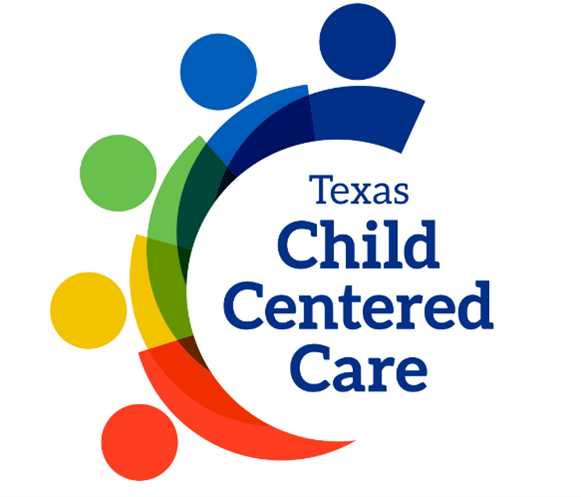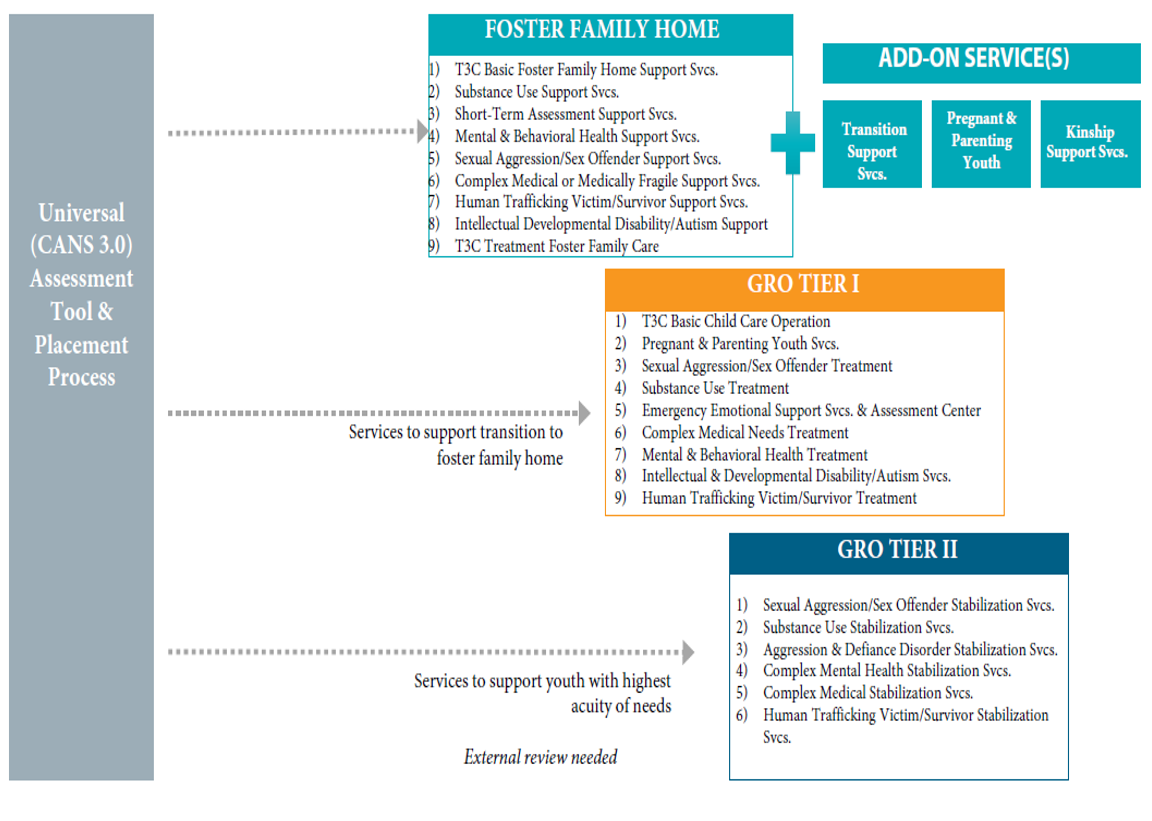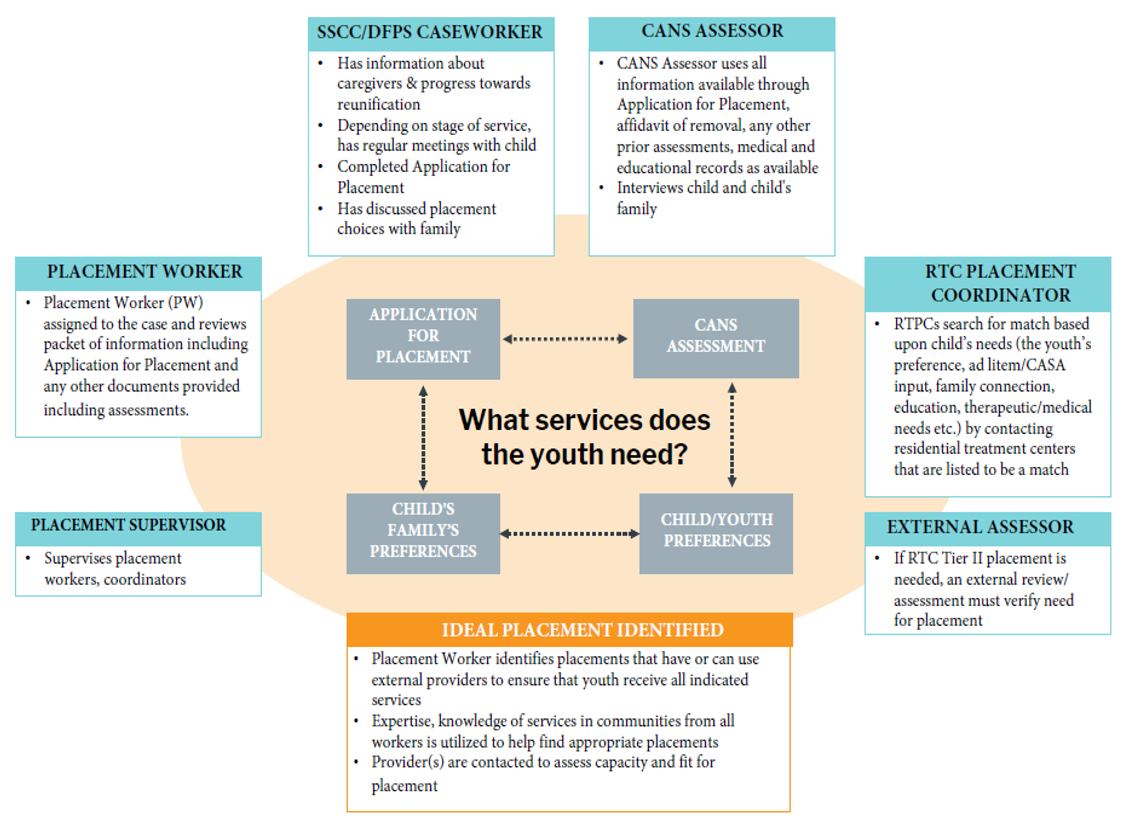Under T3C children, youth, and young adults are assessed, matched, and placed with a Child Placing Agency/foster family home, or a General Residential Operation that specializes in providing a specific type of service, known as a “Service Package”. There are nine distinct Service Packages offered in Foster Family Homes, nine distinct Service Packages offered in General Residential Operation Tier I facilities, and six distinct Service Packages offered in General Residential Operation Tier II facilities.
The CANS 3.0 Assessment
One of the major systemic changes included in T3C is how the CANS Assessment tool is used. An enhanced 3.0 Assessment (customized based on the current CANS 2.0) will be conducted at different stages of a child’s case and will be used to help inform which one of the twenty-four T3C Service Packages is recommended to meet the child’s custom needs.
Under the T3C System, children ages 3 and up will receive a CANS 3.0 Assessment upon the occurrence of any of the following events:
- Within 30 days of removal, or for children turning 3 years old, within 30 days after their third birthday,
- Annually,
- At the time of a placement change,
- Every 90 days if they are receiving therapeutic services, or
- Upon request of the child’s Single Source Continuum Contractor (SSCC) or DFPS Caseworker, to ensure appropriate Service Package selection and placement match.
While the CANS 3.0 Assessment recommended Service Package, and other supporting documentation will be used to inform the process, the knowledge and professional judgement of the SSCC or DFPS staff working to secure placement based on the individual child’s needs and best interest will be the basis for the selection of the actual Service Package and placement type.
Roles and Responsibilities of the SSCC or DFPS Placement Team under T3C
System Roles and Responsibilities under T3C
The Texas foster care system is an inter-agency and interdependent system. Each agency has a unique and specific role in the system that is defined by law, rule, statute, or contract, and the T3C system strives to ensure that roles and responsibilities remain clearly defined. Most of the responsibilities identified are consistent with previously established responsibilities for each entity. However, a few have been added that are specific to the T3C credentialing, service delivery, and oversight processes.



